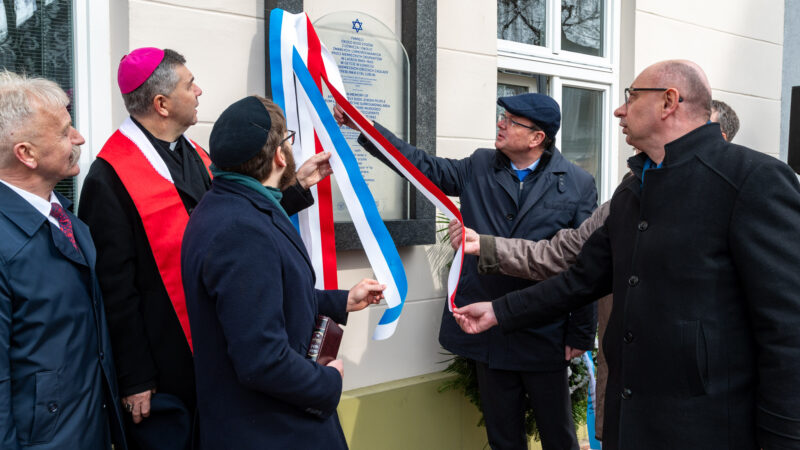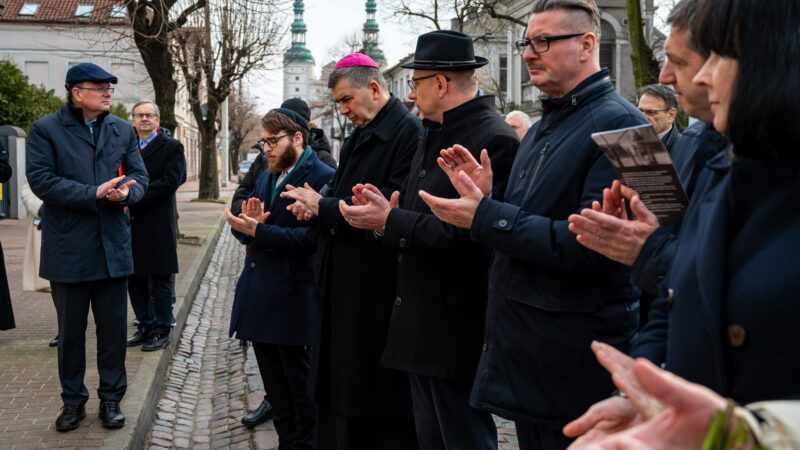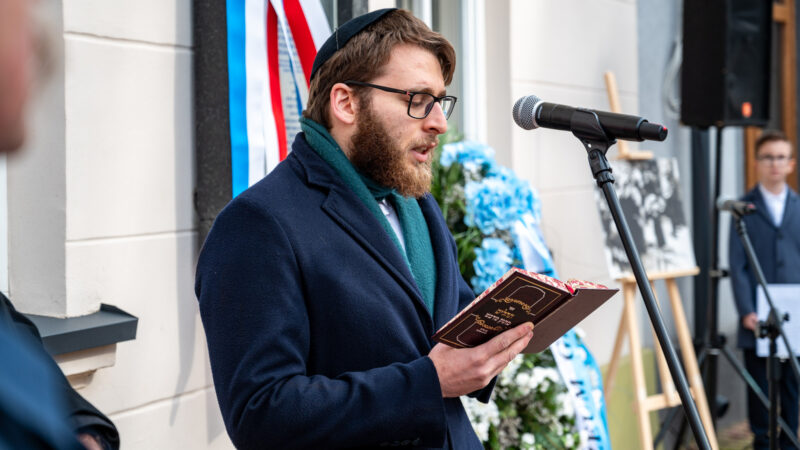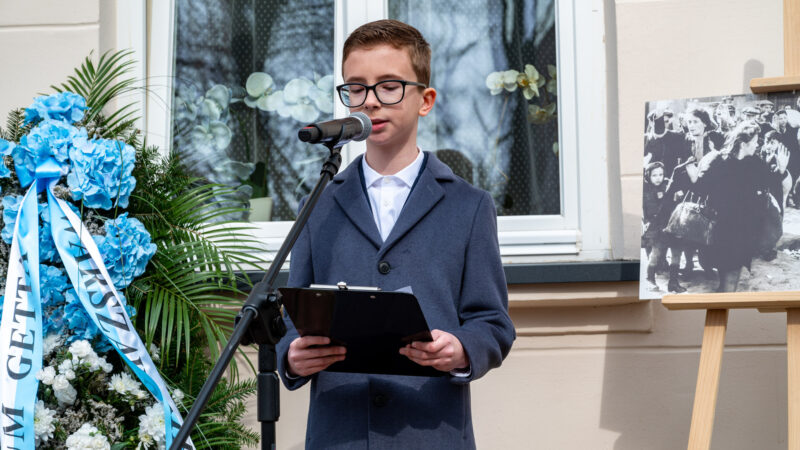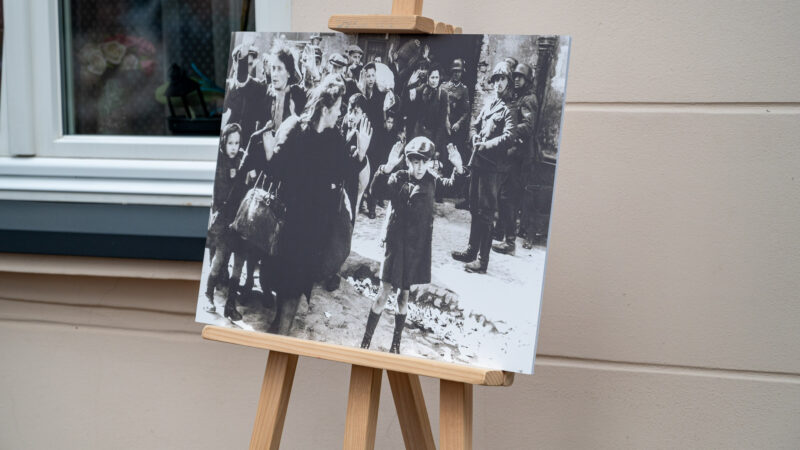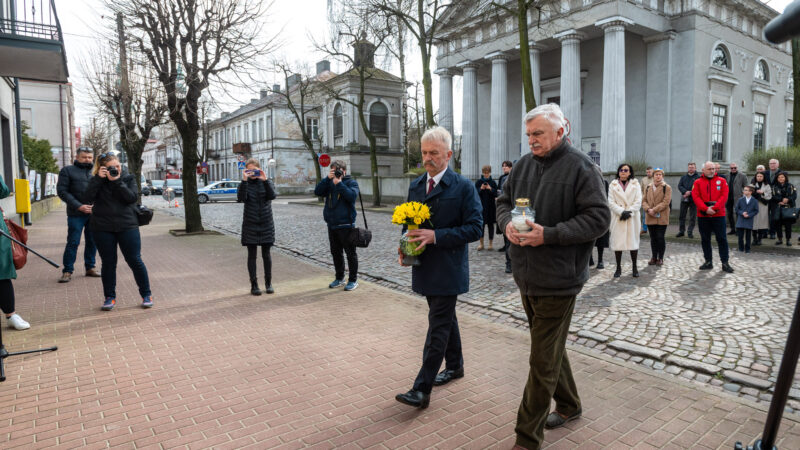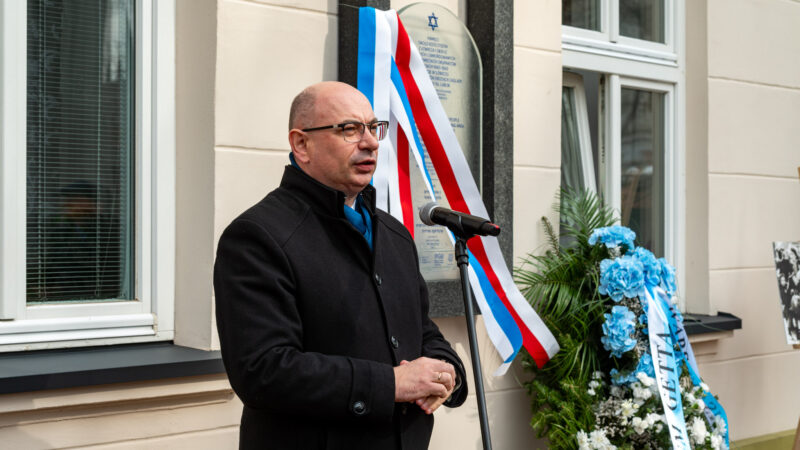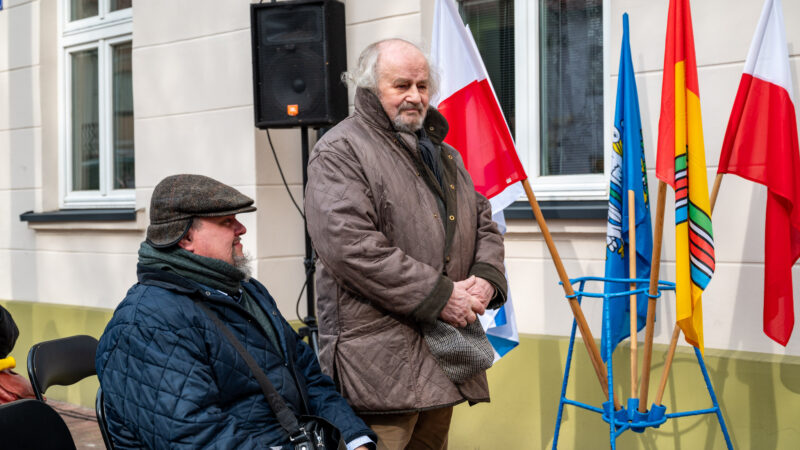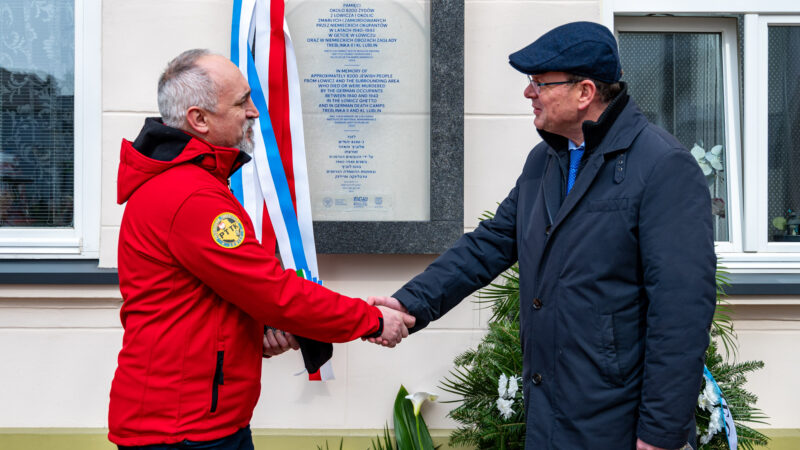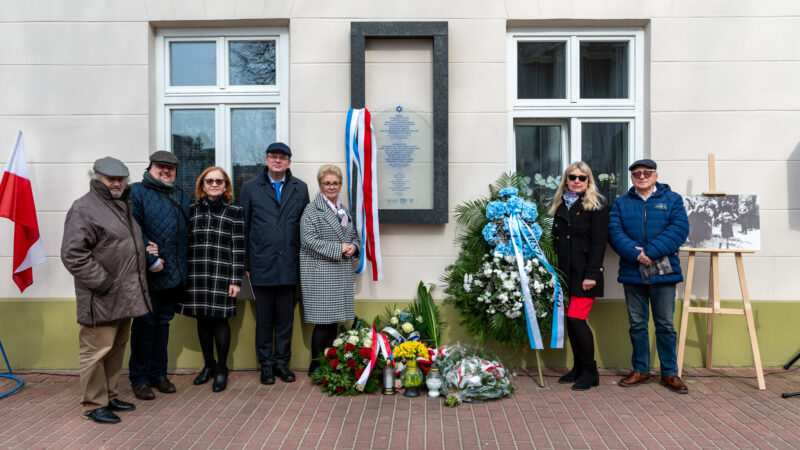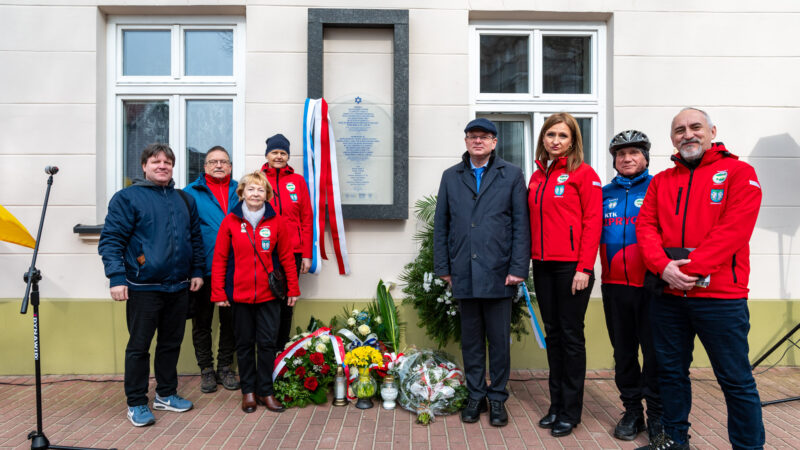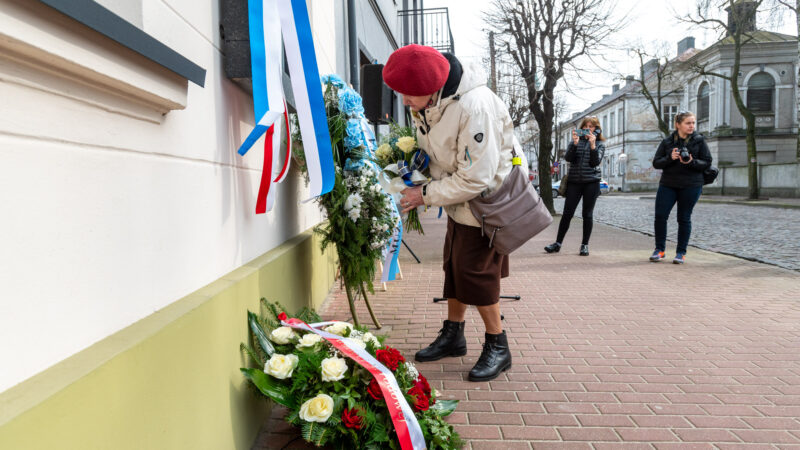Unveiling of the memorial “Macewa Pamięci” in Łowicz
A ‘Macewa Pamięci’ (Matzevah of Remembrance) memorial has been unveiled in Łowicz, commemorating the Jewish community of the town and the Jews displaced there during the World War II.
On 21 March at 18 Podrzeczna Street, the Mayor of Łowicz Krzysztof Jan Kaliński, the Director of the Warsaw Ghetto Museum Albert Stankowski, the Deputy President of the Institute of National Remembrance Dr Mateusz Szpytma and the artist Jerzy Kalina officially unveiled the ‘Macewa Pamięci’, commemorating the 8200 Jews from Łowicz and the surrounding area murdered by the German occupiers between 1940 and 1943.
The memorial was placed on the wall of the tenement in which Artur Siemiątek lived – the boy with his hands up captured in one of the photographs from the so-called Stroop Report, as interpreted by some archival sources. In March 1941, the boy along with his parents and sister was deported to the Warsaw Ghetto. The further fate of the child, however, is not known.
Researchers estimate that in 1939 there were about 4,500 Jews living in Łowicz. The fate of the Jewish community in the town was irrevocably changed by the outbreak of World War II. The city found itself in the territory of the General Government created in October 1939. Jews were initially subjected to harassment and physical attacks, and then to legislation that the Germans introduced throughout the GG. Their workshops and workplaces were confiscated, their property taken away; they were forbidden from practising religious worship and attending school. Jews were marked with an armband with a Star of David, thus distinguishing them from the general population. Over time, displaced people from areas incorporated into the Third Reich began to arrive in the town. The number of Jews in Łowicz increased from around 4,500 to over 8,000. Among them were refugees from Łódź, Stryków, Aleksandrów Łódzki and Zgierz.
In the spring of 1940, the ghetto was established in the centre of Łowicz, and a year later the Jews of Łowicz were ordered to be relocated to the Warsaw ghetto. As conditions were extremely difficult there, they became victims of starvation and of widespread diseases, including an epidemic of typhus. Those who survived the following months shared the fate of the other prisoners of the Warsaw Ghetto, deported in the summer of 1942 to the Treblinka extermination camp. Only a few survived.
“Macewa Pamięci” is to keep the memory of Arthur and others from the community that once lived in Łowicz, contributing to the development of the city and culture.
The Macewa Pamięci in Łowicz is the third memorial of this kind co-executed by the Warsaw Ghetto Museum. It is part of our institution’s mission to disseminate knowledge about the life, struggle and Holocaust in the Warsaw Ghetto and other ghettos in German-occupied Poland.


